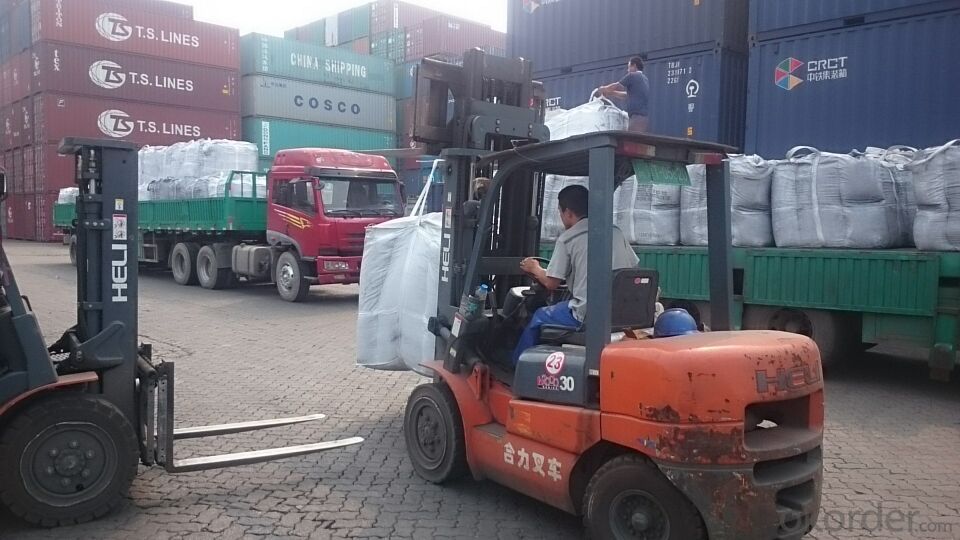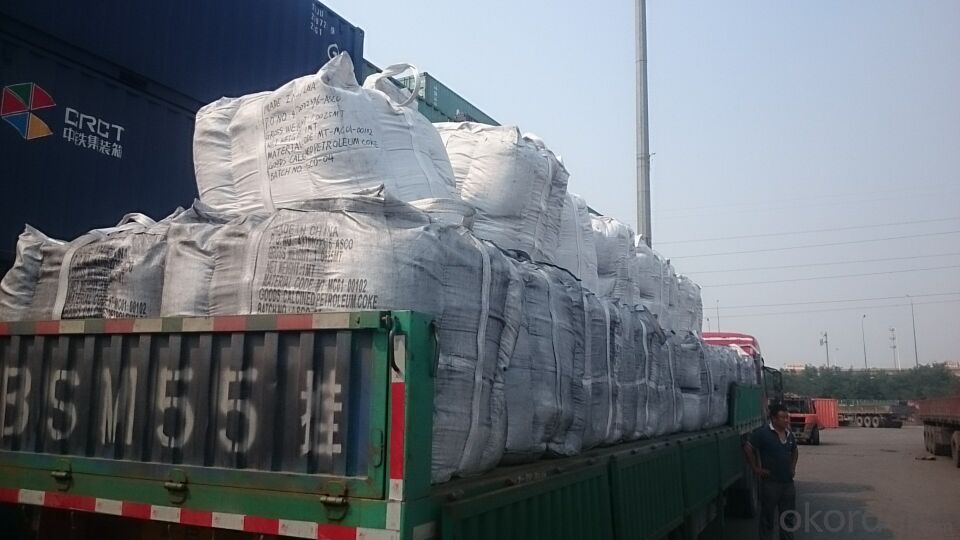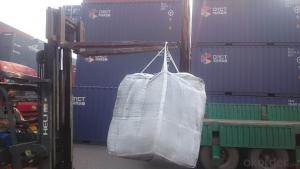GPC with lower Sulphur0.03% max in Low VM with steday quality
- Loading Port:
- Tianjin
- Payment Terms:
- TT OR LC
- Min Order Qty:
- 21 m.t.
- Supply Capability:
- 5000 m.t./month
OKorder Service Pledge
OKorder Financial Service
You Might Also Like
Introduction:
GPC has good characteristics with low ash, low resistivity, low sulphur, high carbon and high density. It is the best material for high quality carbon products. It is used as carbon additive in steel industry or fuel.
Features:
1.Our strong team provide you reliable service that make you feel purchasing is more easier
2. We ensure that we can supply capability with competitive price.
3. Work strictly to guarantee product quality,
4. Highest standard of integrity. Guarantee customer's benefit.
5. Supplying Pet Coke, Met coke, Foundry Coke, Carbon Raiser etc.
Specifications:
F.C.% | 95MIN | 94MIN | 93MIN | 92MIN | 90MIN | 85MIN | 84MIN |
ASH % | 4MAX | 5MAX | 6 MAX | 6.5MAX | 8.5MAX | 12MAX | 13MAX |
V.M.% | 1 MAX | 1MAX | 1.0MAX | 1.5MAX | 1.5MAX | 3 MAX | 3 MAX |
SULFUR % | 0.3MAX | 0.3MAX | 0.3MAX | 0.35MAX | 0.35MAX | 0.5MAX | 0.5MAX |
MOISTURE % | 0.5MAX | 0.5MAX | 0.5MAX | 0.5MAX | 0.5MAX | 1MAX | 1MAX |
Pictures



FAQ:
1. Your specification is not very suitable for us.
Please offer us specific indicators by TM or email. We will give you feedback as soon as possible.
2. When can I get the price?
We usually quote within 24 hours after getting your detailed requirements, like size, quantity etc. .
If it is an urgent order, you can call us directly.
3. Do you provide samples?
Yes, samples are available for you to check our quality.
Samples delivery time will be about 3-10 days.
4. What about the lead time for mass product?
The lead time is based on the quantity, about 7-15 days. For graphite product, apply Dual-use items license need about 15-20 working days.
5. What is your terms of delivery?
We accept FOB, CFR, CIF, EXW, etc. You can choose the most convenient way for you. Besides that,
we can also shipping by Air and Express.
6. Product packaging?
We are packed in bulk ship or in ton bag or placing in container or according to your requirements.
7. Notice
please note that the price on Alibaba is a rough price. The actual price will depends on raw materials, exchange rate wage and your order quantity .Hope to cooperation with you, thanks !
- Q:What are the uses of carbon black?
- Due to its unique properties, carbon black finds wide-ranging applications in various industries. One of its primary uses is as a reinforcing filler in rubber materials, enhancing their strength, durability, and resistance to wear and tear. This makes them suitable for various applications, including tires, conveyor belts, gaskets, hoses, and shoe soles. Moreover, carbon black serves as a pigment in inks, coatings, and dyes. Its high tinting strength and ability to absorb ultraviolet light make it an excellent choice for coloring plastics, paints, and printing inks. Additionally, it is employed in toners for photocopiers and laser printers, ensuring high-quality printing with its dark color. Furthermore, carbon black is valuable in the manufacturing of electrodes for batteries and fuel cells. Its electrical conductivity and large surface area enhance the performance and efficiency of energy storage devices. Additionally, it is used in the production of carbon brushes, crucial components in electric motors and generators. In the construction industry, carbon black acts as a filler in concrete and asphalt, improving their strength, durability, and resistance to weathering. It reduces cracking and extends the lifespan of these materials. Additionally, it is utilized in the production of conductive polymers, which aid in static dissipation and electromagnetic shielding in various construction materials. In conclusion, carbon black has diverse applications across multiple industries. Whether it is reinforcing rubber, coloring inks and coatings, enhancing energy storage devices, or strengthening construction materials, carbon black plays a vital role in improving the performance and durability of various products.
- Q:What are the advantages of carbon nanotube transistors?
- Carbon nanotube transistors offer several advantages compared to traditional silicon-based transistors. Firstly, carbon nanotubes have excellent electrical properties. They possess high electron mobility, which means that electrons can move through them quickly and easily. This allows for faster switching speeds and higher operating frequencies, making them ideal for high-performance applications such as computers and communication devices. Secondly, carbon nanotubes have a very small size. They can be as small as a few nanometers in diameter, which is several orders of magnitude smaller than the feature sizes of silicon transistors. This miniaturization potential enables the development of highly compact and densely packed electronic circuits, leading to higher integration levels and increased device functionality. Additionally, carbon nanotubes are more resistant to heat and have better thermal conductivity than silicon. This means that they can handle higher temperatures without degrading, allowing for more efficient operation and reducing the need for complex cooling systems. It also enables the fabrication of devices that can withstand harsh environments, making them suitable for applications in aerospace, automotive, and defense industries. Furthermore, carbon nanotubes are mechanically strong and flexible. They can be bent and stretched without breaking, making them suitable for use in flexible electronics and wearable devices. Their mechanical robustness also ensures long-term stability and reliability, leading to improved device performance and longevity. Lastly, carbon nanotube transistors can be fabricated using existing manufacturing processes, making them compatible with current semiconductor technologies. This means that they can be integrated into existing electronic systems without significant modifications, reducing the cost and time required for their implementation. Overall, the advantages of carbon nanotube transistors, including their high electrical performance, small size, thermal stability, mechanical strength, and compatibility with existing manufacturing processes, make them a promising alternative to traditional silicon transistors for future electronic applications.
- Q:What are the consequences of increased carbon emissions on vulnerable communities?
- Vulnerable communities bear the brunt of severe consequences caused by the increase in carbon emissions. To begin with, these communities lack the necessary resources and infrastructure to adapt to and alleviate the impacts of climate change. The contribution of carbon emissions to global warming makes it more likely for these communities to experience extreme weather events, such as hurricanes, floods, and heatwaves. Consequently, displacement, loss of homes, and even loss of lives disproportionately affect those who are already marginalized. Moreover, the rise in carbon emissions leads to air pollution, which poses significant health risks to vulnerable communities. Inhabitants of low-income areas often reside in close proximity to industrial plants or highways with high emission levels, increasing their vulnerability to respiratory diseases, cardiovascular problems, and other health issues. This is particularly true for children, the elderly, and individuals with pre-existing health conditions. The consequences of increased carbon emissions also extend to food security. Climate change disrupts agriculture and alters the timing of growing seasons, resulting in reduced crop yields and food shortages. Vulnerable communities heavily dependent on subsistence farming or residing in areas prone to droughts or floods are at risk of malnutrition and hunger. This further aggravates existing inequalities and can lead to social unrest and economic instability. Furthermore, vulnerable communities often rely on natural resources, such as fishing, forestry, or tourism, for their livelihoods. The negative impacts of carbon emissions, such as ocean acidification and coral bleaching, jeopardize these industries, leading to job losses and economic decline. This perpetuates the cycle of poverty and socio-economic vulnerability. In conclusion, increased carbon emissions disproportionately harm vulnerable communities by exacerbating existing inequalities and intensifying the challenges they face. It is crucial to address these consequences through climate mitigation efforts, adaptation strategies, and support for sustainable development.
- Q:Just come out to work, do activated carbon, often see carbon materials and carbon materials, I do not know what the difference, trouble you!
- Carbon refers to elements. Carbon materials usually refer to materials that contain carbon and are the main bodyCarbon is a carbon containing substance of no composition and property consisting of carbon elements
- Q:Are carbon cells the same as alkaline batteries?
- Carbon battery is not only suitable for the flashlight, radios, tape recorders, cameras, semiconductor, electronic clocks, toys and other fields, but also for national defense, scientific research, telecommunication, navigation, aviation, medicine, etc. in the national economy. Carbon battery is mainly used for low power electrical appliances, such as watches, wireless mouse such as electrical appliances should use alkaline batteries, such as the camera, the camera also hold some basic, it needs to use nimh.Alkaline batteries, also known as alkaline dry cells, alkaline manganese dioxide batteries and alkaline manganese batteries, are among the best in the range of zinc manganese batteries. The utility model is suitable for large discharge capacity and long time use.
- Q:What are the effects of carbon emissions on the Arctic ecosystem?
- Carbon emissions have significant effects on the Arctic ecosystem, primarily due to the phenomenon of global warming. As carbon dioxide and other greenhouse gases are released into the atmosphere, they trap heat, leading to increased temperatures worldwide. However, the Arctic is particularly vulnerable to these effects due to its unique characteristics. One of the most significant impacts of carbon emissions on the Arctic ecosystem is the rapid melting of ice. Rising temperatures cause glaciers and ice sheets to shrink, leading to the loss of habitat for ice-dependent species such as polar bears, walruses, and seals. These animals not only rely on the ice for resting and breeding but also for hunting and finding food. With the reduction of their natural habitat, their populations are declining, impacting the delicate balance of the Arctic food chain. Additionally, the melting of ice results in rising sea levels, which can have cascading effects on coastal areas. Many Arctic communities, including indigenous peoples, are located near the coast and depend on the sea for their livelihoods. Increased erosion, flooding, and storm surges due to rising sea levels threaten their homes, infrastructure, and traditional ways of life. Furthermore, carbon emissions contribute to ocean acidification, a process in which the absorption of excess carbon dioxide by seawater leads to a decrease in its pH level. This acidification has detrimental effects on marine organisms such as shellfish, corals, and plankton, which struggle to build and maintain their calcium carbonate structures. These organisms are essential food sources for various Arctic species, including fish, seabirds, and marine mammals. The decline in their populations disrupts the intricate web of life in the Arctic and can have far-reaching consequences. Climate change caused by carbon emissions also disrupts the timing and patterns of seasonal events, such as the timing of plant growth, the migration of birds, and the availability of food resources. This mismatch can have severe consequences for species that rely on specific timing for reproduction, migration, and survival. Overall, the effects of carbon emissions on the Arctic ecosystem are profound and wide-ranging. The loss of sea ice, rising sea levels, ocean acidification, and disrupted ecological processes all contribute to the vulnerability of Arctic species and communities. Urgent action to reduce carbon emissions, mitigate climate change, and protect this fragile ecosystem is crucial for the long-term preservation of the Arctic.
- Q:Wrought iron, steel, cast iron, cast iron, according to the content of the carbon? How many?
- According to the carbon content, but not all. The wrought iron should be called industrial pure iron, the carbon content is below 0.02%, the carbon content of steel at 0.02-2.11%, the carbon content of pig iron in about 2.5-4.3%, and the carbon content of iron in 2.11-4%.
- Q:How does carbon dioxide affect the Earth's atmosphere?
- Carbon dioxide affects the Earth's atmosphere by trapping heat from the sun, leading to the greenhouse effect and causing global warming and climate change.
- Q:What is the carbon emission of the air conditioner?
- Summer, less air-conditioning, 1 hours to reduce carbon emissions of 0.621kg, the action of the low carbon family is not how much money you need to pay, but to change some of your habits and habits, and contribute to environmental protection. Hand in hand to join hands to tackle climate warming, perhaps our hearts will be less worried about the future......
- Q:What is the concept of carbon neutrality?
- The concept of carbon neutrality refers to the goal of achieving a balance between the amount of carbon dioxide emissions released into the atmosphere and the amount of carbon dioxide removed from the atmosphere. It is an approach to combatting climate change and reducing greenhouse gas emissions by aiming to offset the carbon footprint of an individual, organization, or even an entire country. To achieve carbon neutrality, one must first measure and understand the amount of carbon dioxide emissions being generated. This includes assessing emissions from various sources such as energy production, transportation, agriculture, and industrial processes. Once the emissions are quantified, efforts are made to reduce these emissions through energy efficiency, transitioning to renewable energy sources, and implementing sustainable practices. However, not all emissions can be eliminated entirely. In such cases, carbon offset projects are utilized to neutralize the remaining emissions. These projects involve activities that remove carbon dioxide from the atmosphere, such as reforestation, afforestation, or investing in renewable energy projects. By supporting these initiatives, carbon neutrality can be achieved by balancing the emissions produced with carbon removal or reduction efforts. The concept of carbon neutrality is crucial in the fight against climate change as it acknowledges the responsibility of individuals, organizations, and governments to take action in reducing their impact on the environment. By striving for carbon neutrality, we can effectively contribute to mitigating climate change and creating a more sustainable future.
1. Manufacturer Overview |
|
|---|---|
| Location | |
| Year Established | |
| Annual Output Value | |
| Main Markets | |
| Company Certifications | |
2. Manufacturer Certificates |
|
|---|---|
| a) Certification Name | |
| Range | |
| Reference | |
| Validity Period | |
3. Manufacturer Capability |
|
|---|---|
| a)Trade Capacity | |
| Nearest Port | |
| Export Percentage | |
| No.of Employees in Trade Department | |
| Language Spoken: | |
| b)Factory Information | |
| Factory Size: | |
| No. of Production Lines | |
| Contract Manufacturing | |
| Product Price Range | |
Send your message to us
GPC with lower Sulphur0.03% max in Low VM with steday quality
- Loading Port:
- Tianjin
- Payment Terms:
- TT OR LC
- Min Order Qty:
- 21 m.t.
- Supply Capability:
- 5000 m.t./month
OKorder Service Pledge
OKorder Financial Service
Similar products
New products
Hot products





























